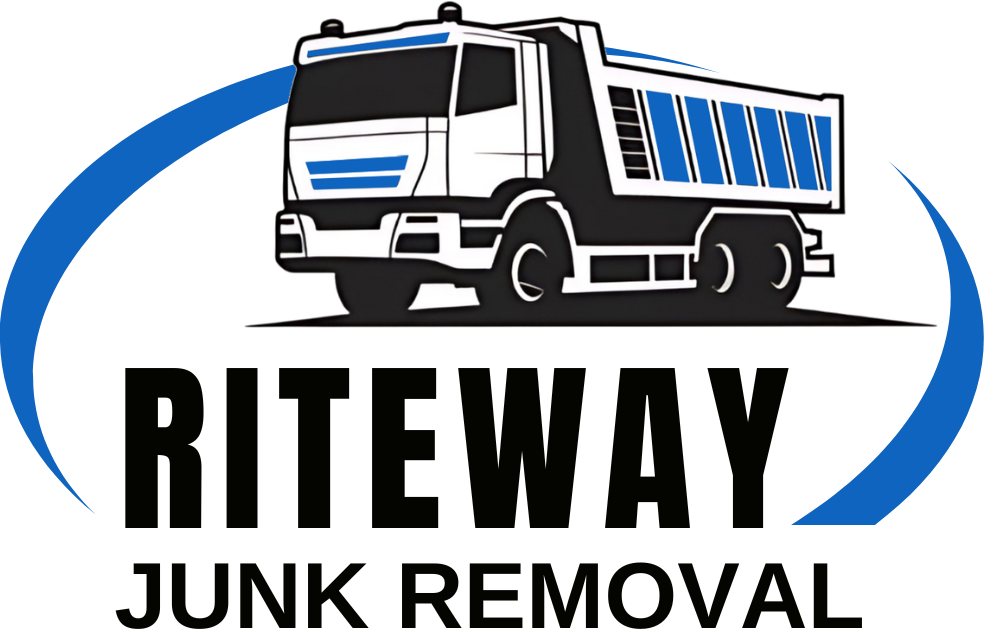Proudly Serving Elkhart, IN
ritewayservicesinc@gmail.com

Junk Removal for Landlords - A Complete Guide
Landlords face many challenges, and property maintenance is one of the biggest. Among the most common issues? Dealing with
unwanted junk left behind by tenants. Not only can cluttered spaces be a headache, but they also delay the time between tenants, costing you potential rental income. In this post, we’ll discuss effective junk removal strategies for landlords, how to maintain a clean property, and why a
professional junk removal service can be a game-changer.
Why Junk Removal Matters for Landlords
Keeping a rental property clean and free of clutter is essential for several reasons. Here’s why you should prioritize junk removal:
- Attracting Quality Tenants: A clean and well-maintained property appeals to potential tenants. A cluttered space might give the impression that the landlord is not attentive to upkeep, potentially attracting less responsible tenants.
- Faster Turnaround Between Tenants: Junk left behind can delay the process of preparing a unit for new tenants. A quick removal process ensures a faster turnaround, keeping your rental income steady.
- Maintaining Property Value: Regular junk removal prevents damage from neglected items, such as water damage from leaky appliances or pests attracted to food remnants.
- Legal Considerations: In some locations, landlords may be required to remove junk in a timely manner to comply with local housing regulations. This prevents legal complications down the road.
How to Remove Junk from Rental Properties: A Step-by-Step Guide
If you find yourself dealing with junk left behind, here’s how to handle it efficiently:
- Inspect the Property: Start by walking through the rental unit to assess the junk. Take photos and notes to document the items left behind, which can be helpful if there are disputes with former tenants.
- Check the Lease Agreement: Review the lease for any clauses about abandoned property. In some states, landlords must store a tenant's belongings for a certain period before disposal.
- Notify the Tenant (If Required): If required by law, notify the former tenant about their abandoned items. Provide a clear deadline for them to retrieve their belongings before proceeding with removal.
- Decide on a DIY or Professional Approach: Depending on the volume of junk, you can either remove it yourself or hire a professional junk removal service. A professional service can save time and effort, especially for larger items like furniture or appliances.
- Arrange for Donation or Disposal:
Not all junk has to go to the landfill. Consider donating usable items to local charities. For the rest, follow local disposal guidelines for safe and eco-friendly junk removal.
DIY vs. Professional Junk Removal
| Criteria | DIY Junk Removal | Professional Junk Removal |
|---|---|---|
| Cost | Lower, but consider time and vehicle rental | Higher upfront, but may save money long-term |
| Time | Time-consuming, especially for large items | Quick and efficient, often within a day |
| Effort | Requires physical labor and disposal knowledge | Minimal effort; handled by professionals |
| Eco-Friendliness | Up to the individual's disposal practices | Many services include recycling options |
When to Hire a Professional Junk Removal Service
Hiring a professional junk removal service is ideal when:
- Large Volumes of Junk Are Involved: If a tenant leaves behind a significant amount of furniture, appliances, or large trash items, it may be too much for one person to handle.
- Time Is of the Essence: If you need the property ready for a new tenant quickly, a professional service can expedite the process.
- Safety Concerns Exist: Heavy items, hazardous materials, or potential pest infestations might pose risks during DIY removal. Professionals have the equipment and training to handle such situations safely.
Tip: Always get multiple quotes from junk removal companies and check online reviews to ensure you choose a reliable service.
FAQs About Junk Removal for Landlords
1. How much does junk removal cost?
The cost varies based on the volume of junk and your location. A small load might cost around $100-$200, while larger jobs can exceed $500. It’s best to get a few estimates.
2. Can landlords charge tenants for junk removal?
Yes, landlords can deduct junk removal costs from the tenant's security deposit if it's outlined in the lease agreement. It’s important to keep receipts and document the junk left behind.
3. What should landlords do with abandoned tenant property?
Landlords must follow state laws, which often require notifying tenants and holding their belongings for a certain period before disposing of them. Always check local regulations before discarding items.
4. Are there eco-friendly junk removal options?
Many junk removal companies offer eco-friendly disposal, recycling items like electronics and donating usable goods. Always ask about these options when hiring a service.
Top Tips for Smooth Junk Removal as a Landlord
- Be Proactive with Lease Agreements: Include a clause about junk removal responsibilities in your lease agreement. This sets clear expectations with tenants from the start.
- Inspect the Property Regularly: Regular inspections help catch any issues early, preventing junk buildup over time.
- Build a Relationship with a Local Junk Removal Service: Having a trusted service on standby can be a lifesaver when tenants leave behind unexpected messes.
- Encourage Tenants to Donate Unwanted Items: Share information on local donation centers to make it easy for tenants to donate items before moving out, reducing the amount left behind.
The Benefits of Eco-Friendly Junk Removal
Choosing eco-friendly junk removal options isn’t just good for the environment—it can be great for your reputation as a landlord. Here’s why:
- Improved Tenant Relationships: Tenants appreciate landlords who care about sustainable practices, fostering positive relationships.
- Cost Savings: Some donation centers offer free pickup for furniture and appliances, reducing your disposal costs.
- Compliance with Local Regulations: Many areas have strict rules about e-waste disposal and hazardous materials. Using an eco-friendly service ensures compliance and avoids fines.
Eco-Friendly Junk Disposal Methods:
| Item | Disposal Method | Eco-Friendly Alternative |
|---|---|---|
| Electronics | E-waste disposal center | Donate to refurbish programs |
| Furniture | Landfill | Donate to local shelters |
| Old Mattresses | Disposal at approved facilities | Recycle at mattress recycling centers |
| Appliances | Scrap metal recycling | Donate to repair shops |
Managing junk removal as a landlord can seem overwhelming, but with the right approach, it doesn’t have to be. By understanding your responsibilities, setting clear expectations with tenants, and choosing the right removal methods, you can keep your rental property clean and ready for the next tenant. If time and convenience are priorities, a professional junk removal service can be a wise investment.
Need help with junk removal? Consider reaching out to a local professional service today and make the process hassle-free. And don’t forget to share your experiences or questions in the comments below!
Keeping your rental properties junk-free not only makes your life easier but also attracts responsible tenants who appreciate a clean, well-maintained space. Stay proactive, and you’ll see the rewards in smoother tenant transitions and a better bottom line.
Contact us
If you have any questions or need any assistance after business hours, please get in touch.
ADDRESS
221 US Highway 20, Middlebury, Indiana 46540, United States
Phone
BUSINESS HOURS
- Mon - Sun
- -

We will get back to you as soon as possible.
Please try again later.
All Rights Reserved | Riteway Demolition
